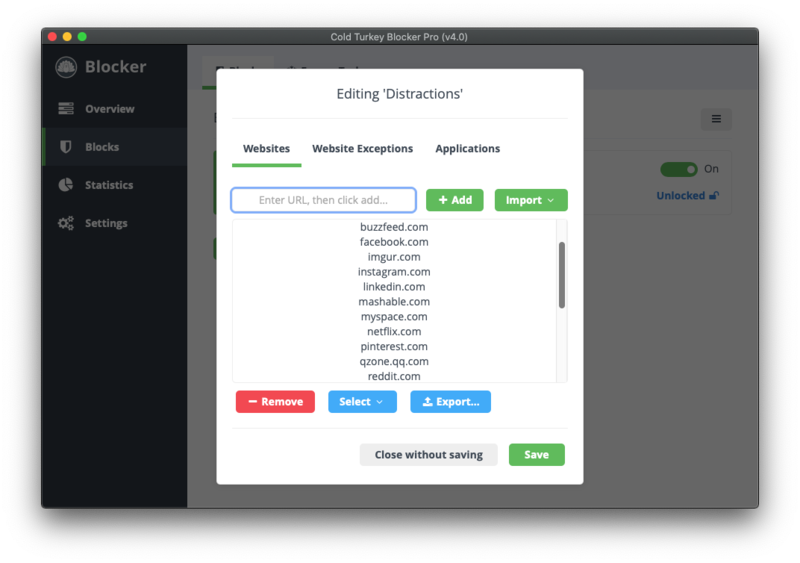Since the time the first case of coronavirus was documented, the pandemic has drastically changed the business landscape. During this period, organizations around the world have been mandating or encouraging remote work. All these businesses experienced the benefits of upholding a remote working culture.
Remote working not only helped businesses cut down their overhead costs but also gave them better access to talent. Plus, it improved employee morale and overall job satisfaction as it helped employees achieve work-life balance. No wonder, in a Gartner survey, 74 percent of the CFOs and finance leaders surveyed said that they intend to shift a considerable portion of their workforce to remote work permanently.
However, for decades, organizations have been skeptical about letting their employees work remotely. And rightly so! Working remotely isn’t easy or entirely productive. In fact, it can be tough to maintain your productivity because of challenges like distractions, time management issues, digital miscommunication, and others.
But remote work is here to stay! In this post, we have a few valuable tips that can help you thrive in a remote work environment and stay productive.
-
Create a Dedicated Workspace
Everyone needs their space! If you were to continue going to your workspace, you’d most probably have your desk or cubicle. Why should it be any different when you are working remotely?
If you are working from home, creating a dedicated workspace to mentally separate yourself from your habitat. This will allow you to stay focused at work and ward off the common distractions encountered at home. Choose a quiet corner or room like your basement, the attic, or garage that separates you from the communal spaces.
If working from home isn’t an option, join a co-working space where you’ll not just maintain your productivity but also offer you the workplace infrastructure needed by remote workers. Further, co-working spaces are great for networking. So, whether you are a startup owner or an e-commerce marketer working remotely, coworking spaces are an excellent place to network with investors, vendors, advertisement and SEO agencies, and other professionals in your niche.
Alternatively, you can work out of a quiet coffee shop where you can prioritize work over everything else.
-
Block Your Work Calendar
When we visit our workspace, we typically adhere to a routine with clear timelines for each task. However, when working from home no one’s tracking these timelines, making it tough to stay on top of our daily objectives. Moreover, the present crisis has forced us to juggle multiple responsibilities like homeschooling and managing the household while accommodating heavy workloads.
All this can easily affect one’s productivity and make it tougher to maintain a work-life balance.
Like you did when you went to the office, set a schedule and adhere to it. Do some serious planning and block your time for work. There’s nothing wrong with setting meetings with yourself on Google or a time management app like Toggl or Timely.
Similarly, if you have a meeting with internal or external stakeholders, it’s wise to put it on Google Calendar. The tool will notify the necessary people about the meeting.
So, if you have a meeting scheduled, you can create a card like this on the app, thus clearly blocking your time for this task.

Doing so will inform your teammates of your work schedule and encourage them not to bother you during this time. Further, setting clear deadlines for specific tasks will prevent multitasking, enabling you to cross out tasks from your to-do list and stay productive.
-
Manage Distractions
Maura Thomas, the author of Work Without Walls: An Executive’s Guide to Attention Management, Productivity, and the Future of Work, shares that humans are conditioned to seek distractions.
To quote her:
“Our typical environment undermines our attention span. Our attention is diverted every 30 to 120 seconds from things like email. We’ve been habituated into distraction. We all suffer from this; it doesn’t matter the location.”
Here are a few ways you can manage distractions while working remotely.
- Set clear boundaries around your work environment. The people around you should know when you are not to be disturbed.
- Be aware of your weaknesses and write down rules to counter them. For instance, if you struggle with turning on the television, keep the remote away. Make an effort to adhere to the set rules.
- Count on technology but don’t let it interrupt your schedule. For instance, keep your phone on silent or do-not-disturb mode to avoid unnecessary notifications and calls.
Similarly, if you tend to scroll through your newsfeed, use apps like Freedom, Cold Turkey, or StayFocusd that allow users to block social channels and websites for a set amount of time.
Check out how Cold Turkey blocks distracting websites, allowing users to reclaim their time and boost productivity.

This can significantly improve your productivity while keeping social media distractions at bay.
- Fight the urge to multitask. When you are at home, millions of distractions can come in the way of a productive day at work. It could be anything from the pile of dishes in the kitchen sink to devices buzzing with messages.
Not all these distractions require you to multitask. Instead, pinpoint the critical tasks, arrange them in the order of importance, and address them before the day is over.
-
Use the Right Tools
Having the right tools by your side is imperative for maintaining productivity and collaborating with your team members. Modern technology has brought in a wide variety of tools that can help remote workers stay productive.
Here are a few tools that can keep you on track when working remotely.
- Trello or Basecamp: If you want an app that can help you with task management or maintain your daily calendar, Trello can help. The tool also offers collaborative features that allow you to assign tasks to teammates and work together on multiple projects.
- Google Drive: Forget saving files on your desktop! Store and access all your documents and presentations on the cloud. This allows you to open and edit the documents from any location or device.
The tool also offers easy collaboration features, enabling you to watch your colleague make edits within the document while conversing with your teammate in real-time.
- Evernote: The tool allows you to take important notes, create documents and to-do lists, and organize your day.
- Todoist: The tool can help you organize tasks and subtasks. It also lets you create projects, upload documents, set reminders, and add notes.
- Slack: Communication is a big challenge among remote workers. However, tools like Slack help distributed teams collaborate seamlessly. The messaging system now allows video calls for simplified communication.
-
Don’t Forget to Take a Break
Breaks are proven to ease the body and mind and reboot the brain. Taking breaks at work improves your ability to concentrate and changes the way you look at the challenging task at hand. This is good for your work productivity.
Did you know:
According to Lifehack, 30-second microbreak can increase your productivity up to 13 percent?
Working remotely would mean a much more sedentary lifestyle than at the office. This could negatively affect your health and bring down your productivity. Take frequent breaks during the day to walk around, exercise, or meditate. This will relieve stress, help you stay physically active, and improve your focus at work.
Also, make time for non-work interactions. For instance, chatting with colleagues about the latest news, hobbies, and trending topics can help you connect with the team and uplift your mood, thus positively impacting your productivity.
Summing Up
Working remotely means more distractions and social isolation, disrupted routine, and limited communication and collaboration with colleagues. All these factors can come in the way of work and hamper your productivity.
Use the tips shared in this post to overcome the challenges encountered when working remotely and stay productive each day.






